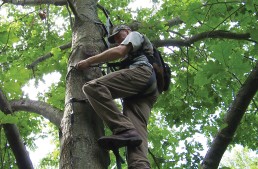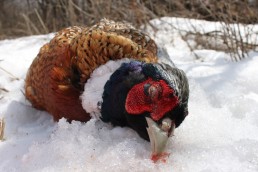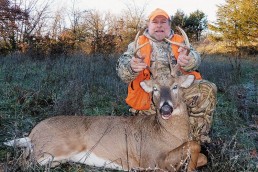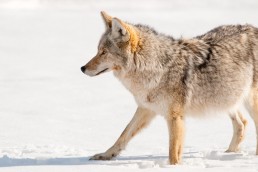Tips to Improve your Treestand Setup
SHARE THIS POST
If I had to choose one place where my worries disappear, bills can’t reach me, and the hustle and bustle of our fast-paced world stops, it would have to be in one of my treestands during the fall archery season. This is where the majority of the 300,000-plus bowhunters spend their time across the state beginning October 1.
It isn’t hard to figure out why so many archers choose to hunt from an elevated stand. Besides its ability to provide a place of refuge against modern day stress, numerous benefits provide bowhunters with advantages the extraordinary senses of mature bucks. These include concealment, longer range of visibility and scent dispersal.
Here are some tips that will help you safely and efficiently setup up your stands so that you are more successful in the deer woods.
Location
Long before you even start thinking about hanging your stands, you must do some scouting so that you can figure out areas that hold mature bucks. If you’re unfamiliar with the layout of the land, a great place to start is the 3-D mapping program, Google Earth. This program utilizes aerial photography, which will help you gather information and allow you to have a game plan before you enter an area. This app is especially helpful in locating funnels, water sources and pockets of thick cover that could be potential deer bedding areas. Trail cameras are another excellent scouting tool that allow you to gain knowledge of the deer activity. Once the archery season starts, they will also help you determine which stand sites are being visited most frequently by mature bucks, so you are spending time in the most productive stand.
Although the above scouting tools are helpful, nothing beats putting in some leg work so that you can see these areas for yourself. Take a GPS or notepad with you and mark areas where you find old rubs, deer trails, bedding and feeding areas, funnels and scrapes.
Tree selection
There are numerous things to consider before attaching your stand to a tree: the most important being wind direction. Select trees that are located downwind of deer travel routes, food sources, bedding areas and active scrapes based on the prevailing wind direction in that area. During fall, the prevailing wind can be entirely different than during the spring and summer months. Also, if you are unfamiliar with the location, it might be difficult to determine which direction the prevailing wind comes from. Therefore, setting up two stands in the same area may be necessary to allow for a sudden shift in wind direction. There is nothing worse than having intentions of hunting from a particular stand only to find out that the wind is unfavorable. This could cause you to miss out on the small window of opportunity during the pre-rut and rut phases.
Another important thing to consider is the kind of trees in the area. Evergreen (coniferous) trees, which include white pine and hemlock, are my favorite types of trees to place a stand, if available. These trees provide great cover throughout the entire archery season and generally have plenty of limbs, which will help conceal you. You don’t have to worry about losing cover and exposing yourself like you would while hunting from a deciduous tree where the leaves all drop later in the fall. If this type of tree is the only option, cut tree limbs from other sources and tie them on the tree or place a camouflage skirt around your treestand to break up your profile. The only exception to this is oak trees. Generally, they don’t lose all of their leaves right away like other deciduous trees and, depending on the year, can provide deer with acorns to feed on.
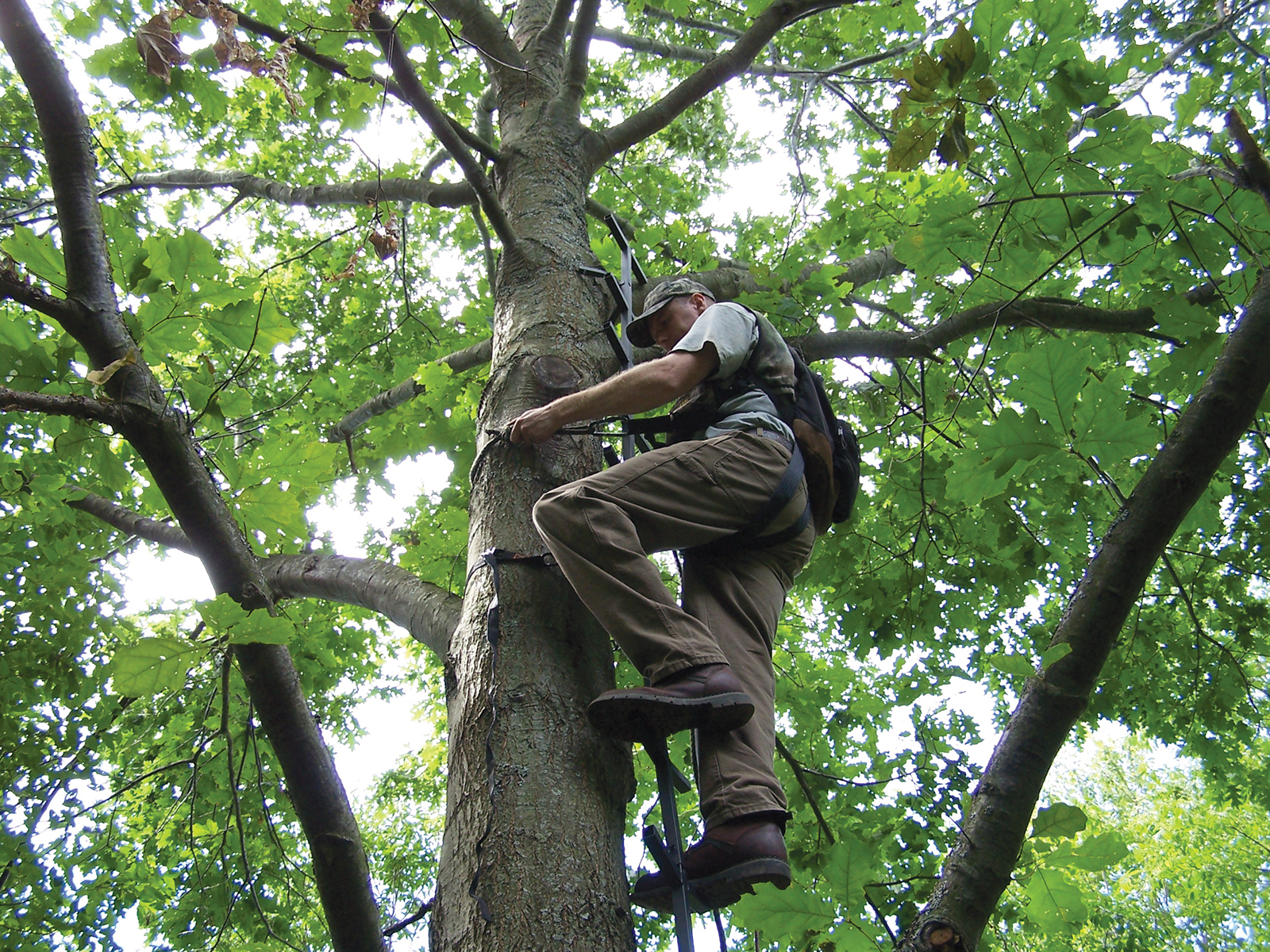
Timing
Choosing the best time to enter a whitetail’s environment and begin the task of trimming and setting up your stand is essential to increase your chances at taking a mature buck. Avoid contaminating an area that you worked hard to find and contains all of the right ingredients for a potentially successful archery season. If you were unable to setup your treestand several months in advance of the seaso,n you need to take extra caution. Treat your pre-season trip into the woods like are heading out on a bowhunt. Take a shower in scent-eliminating soap, and wear scent-absorbing clothing and rubber boots. Also, spray yourself down along with all of your trimming tools, tree stands and accessories.
The best weather condition to put your stands up is during a steady rainfall. Precipitation decreases a whitetail’s sense of smell. Any human odor that you leave behind will be quickly dissipated by the rain and help keep you from disturbing your hunting area. Windy days are also great times to secure a treestand because deer will have a difficult time hearing.
As for the time, the middle part of the day is a safe time to enter the woods. I usually like to set my stands up between around 10am and 1pm. By then, deer should be hunkered down in their bedding areas until later in the day.
Treestand accessories
After your stand is secured, take the extra time to attach accessories that will help keep your gear organized while on stand. Add screw-in hooks, saddle bags and bow hangers to allow you to easily access your antlers for rattling, your bow, quiver, backpack and other equipment as needed during your time on stand. Two other important pieces of safety equipment to include on your tree are a long rope to raise and lower your bow, and an approved strap which will allow you to safely connect your full-body harness tether.
My setup equipment
The following is a list of equipment that I take with me while preparing a stand site and attaching a treestand.
Are you enjoying this post?
You can be among the first to get the latest info on where to go, what to use and how to use it!
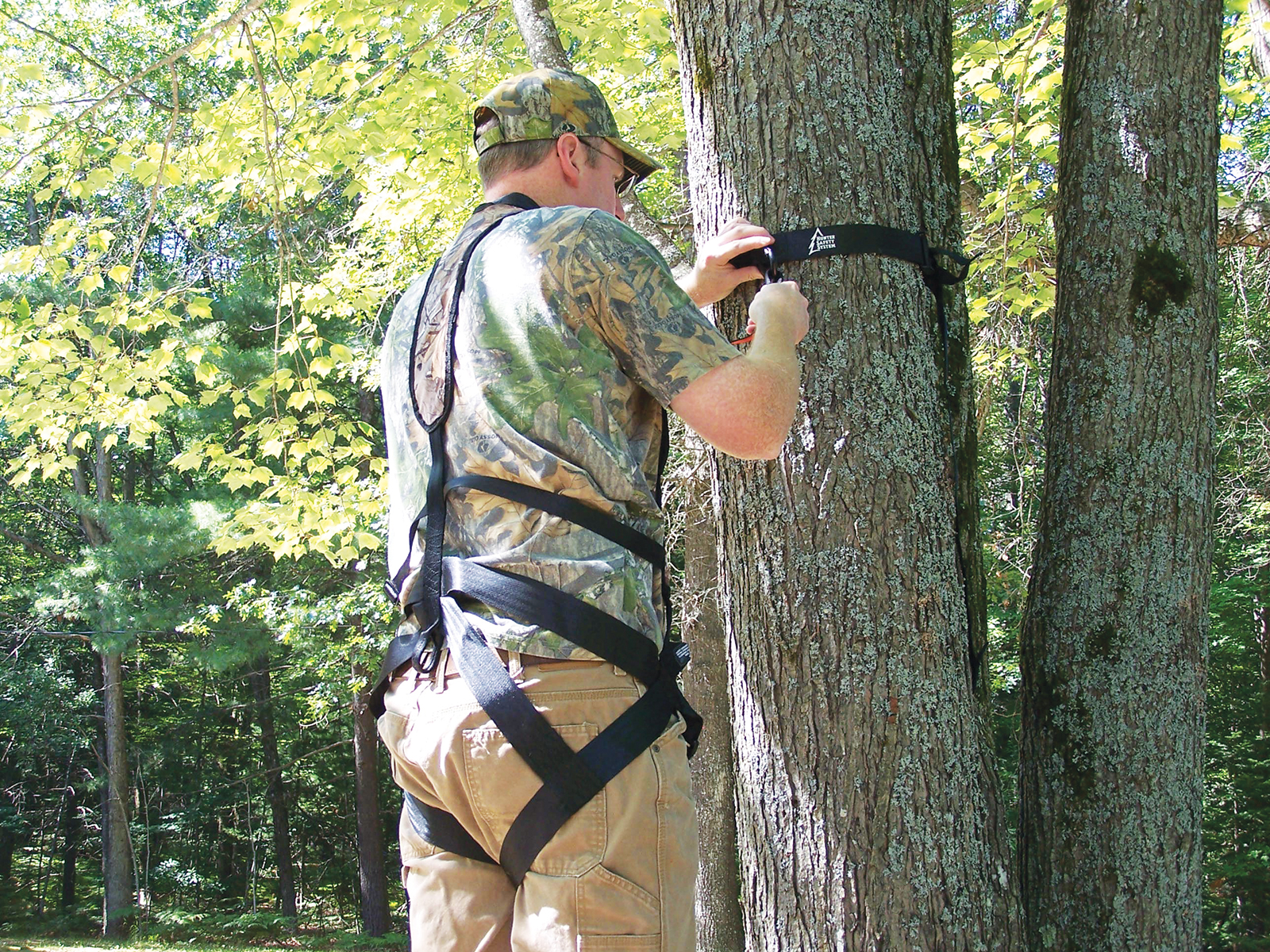
Backpack
A small backpack allows you to transport most of the gear necessary to hang a stand and free your hands up for carrying other equipment. When I am preparing to put up my treestands, I use a different backpack than the one that I use while hunting. Before heading afield, I spray it down with a scent-eliminating spray.
Full-body harness
It is essential to wear a full-body harness at all times while ascending or descending your treestands. When attaching my climbing sticks and hang-on stands, a full-body harness allows me to safely use both of my hands without having to worry about holding onto something for support.
Folding saw/pole saw
Folding saws are great for cutting any branches or trees with a diameter ranging up to eight inches. I’ve probably pushed the envelope a few times with mine, but they are a lot safer to use than a chainsaw when you’re twenty feet high. Without a pole saw, it would almost be impossible to cut those branches that are out of reach. However, it is important to only remove those limbs that are necessary for a clear shot without compromising the cover.
Rope (haul-line)
When hanging stands. I use a rope to safely pull up my fixed-position stands. After the stand is attached, I then tie a rope (haul-line) to either a branch or my stand, which will be used to raise and lower my bow.
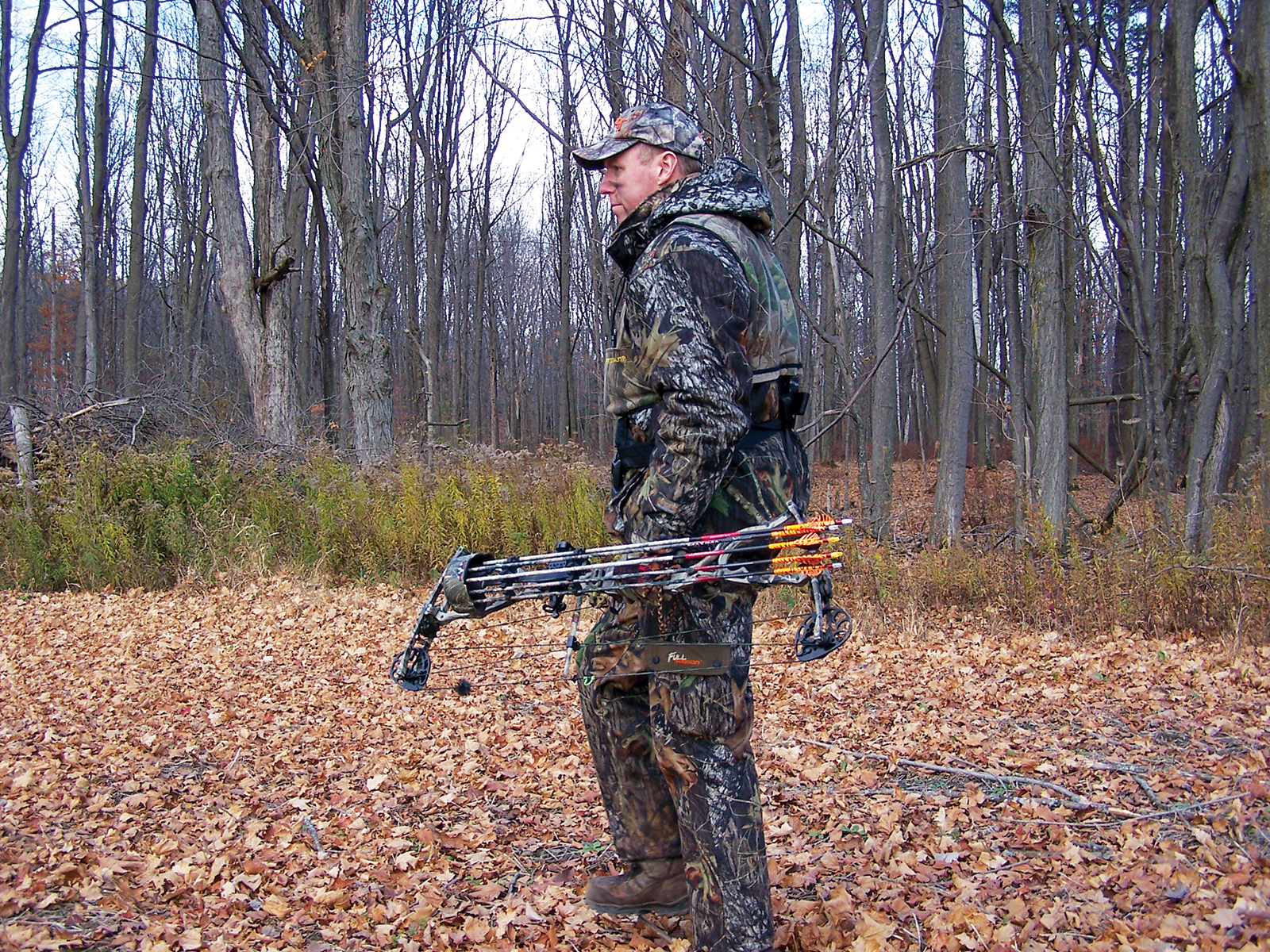
Ratchet straps
Some may say that my ratchet strap collection is out of control, but they come in very handy when securing both my climbing sticks and ladder stands. Even though manufactured stands come with the appropriate straps, I still like to add ratchet straps to reinforce them. It increases my confidence when climbing into them.
Cables and locks
Unfortunately, there are people out there that will steal your treestands, given the opportunity. About ten years ago, I had a fixed position stand stolen, which I had failed to attach a cable to. With your hard-earned money spent on treestands, it is worth a few extra dollars to buy one for each of your stands.
Other accessories
As discussed above, attach your hooks, bow hanger, saddle bags and quick-connect strap (for your harness) after securing your stands. This will save you time and help lighten the load when it comes time to hunt.
No doubt about it: If you scout prior to the season and take the time to properly prepare all of your treestands, you stand a good chance at taking a mature buck this fall.
MWO
SHARE THIS POST
Did you enjoy this post?
You can be among the first to get the latest info on where to go, what to use and how to use it!
Darin Potter
Darin Potter’s passion for outdoor writing began at the age of 12 when he first began writing in a journal that his parents bought him on a family camping trip in Northern Michigan. His writings have appeared in several Midwest publications: Michigan-Out-of-Doors, Michigan and Ohio Outdoor News, Modern Pioneer, and MidWest Outdoors.
